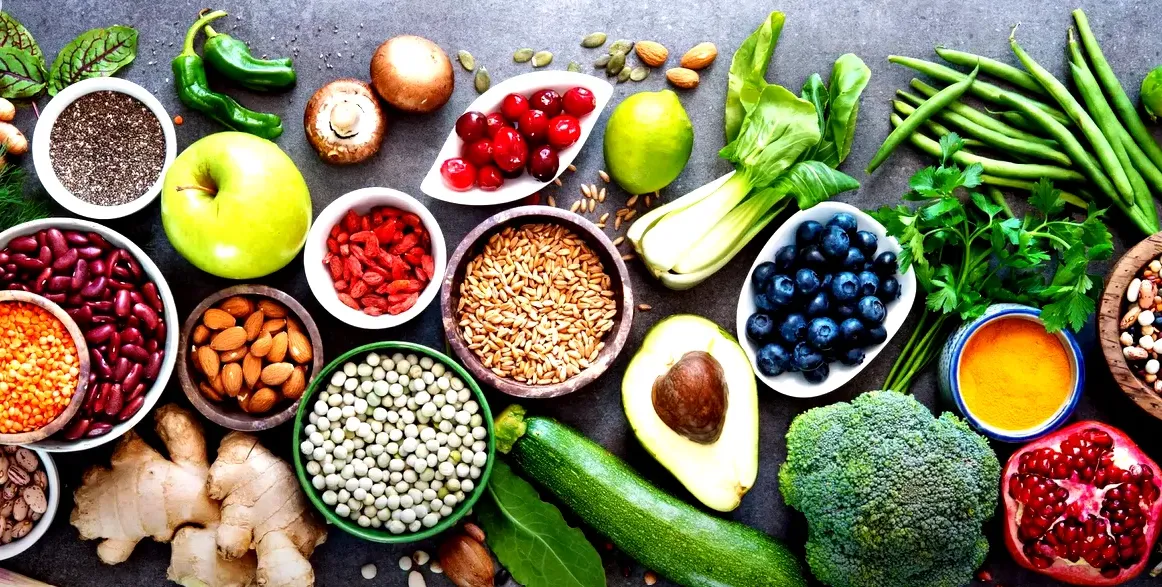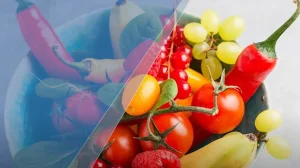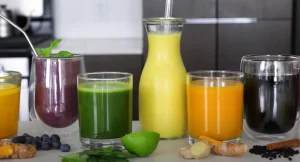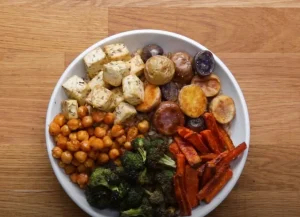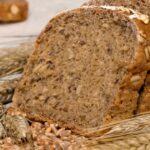- Acidic foods can contribute to digestive discomfort, including acid reflux, heartburn, and cramps
- Natural acid-forming foods, such as citrus fruits, can also cause digestive discomfort
- The pH scale measures the acidity levels of foods and is important for understanding their impact on digestive health
- Alkaline foods have a pH level between 7 and 14, acidic foods have a pH level between 0 and less than 7, and neutral foods have a pH level of 7
- Choosing non-acidic fruits and vegetables can help manage symptoms of conditions like acid reflux, heartburn, and gastritis
If you, like many of us, suffer from the agonizing symptoms of acid reflux, heartburn, or chronic cramps?
Do you think non acidic fruits and vegetables can help you with it?
Then it’s time we talked about digestion and acidity.
Acidic food and digestive discomfort
Acidic food is a common cause of digestive discomfort, and this time, it’s not just fatty foods and highly processed products.
Highly acidic fruits like citrus fruit and other “natural” acid-forming foods can also be to blame.
If you are trying to cut down on acid in your diet, read on.
Here we’ve brought together a list of non acidic vegetables and fruits, including low-acid fruits, that are perfect for sensitive tummies.
But first, what fruits are not acidic, what makes food acidic, and why should I be interested in the pH value of my food?
What is the pH scale?
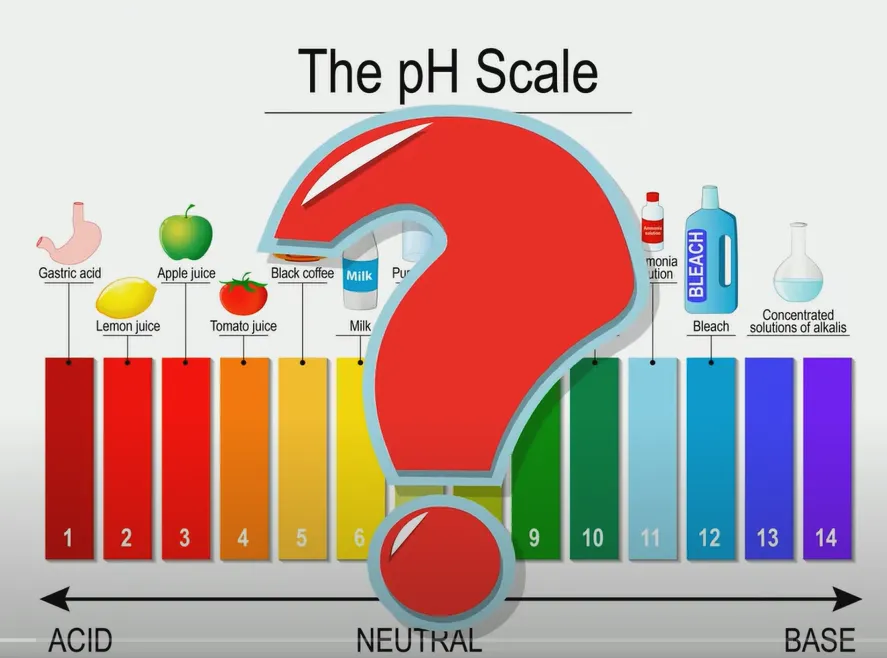
The pH scale is a very special scale designed to measure the acidity levels of healthy foods, compounds, or elements.
Think of it as a thermometer, but instead of telling us how hot or cold something is, the pH scale tells us how acidic or alkaline (the opposite of acidic) something is.
It does this using a scale from 0 (very acidic) to 14 (very alkaline).
The middle point, 7, is considered neutral.
All natural elements lie somewhere on this scale, and we can generalize them into three main categories: alkaline, acidic, and neutral.
Alkaline/Basic >7–14
For a compound to be considered alkaline, also known as basic, it has to have a pH score between seven and 14.
The higher the number, the more basic the compound is.
Human blood, for example, is slightly basic, and our blood pH level lies around 7.4.
Household bleach is very basic and has a pH level of 12.3.
Acidic 0– <7
On the other end of the scale, we have our acidic compounds with a pH level between zero and less than 7.
The lower the number, the more acidic a compound is.
Lemon juice, for example, has a pH level of 2.4, making it very acidic.
Limes are another acidic fruit with a pH level of around 2.0–2.8.
Milk has a pH level of 6.6, making it only very slightly acidic.
Neutral 7
At the midpoint of our scale, we have the number 7, and this is what we would consider neutral.
Pure water with a pH level of seven is regarded as the standard as far as neutrality goes.
This is important to keep in mind when selecting foods for those with sensitive stomachs, as a neutral pH can help prevent irritation and discomfort.
pH levels and your diet
So what does any of this have to do with your diet?
Over the years, many health experts have tried to draw comparisons between the pH levels of the foods in our diets and our health, particularly with regard to acid-producing foods.
You may have even heard about something called the “alkaline diet.”
Supposedly, this alkaline state is optimal for disease prevention and can miraculously help people fight cancer, heart disease, and other chronic illnesses.
While there is very little medical evidence to back up these claims, there are many different reasons why some people choose to eat low-acid fruits and vegetables.
Our bodies, especially our tummies, are highly susceptible to changes in pH levels and can be strongly affected by the foods we consume.
Some people especially have a more challenging time processing acidic foods and can experience discomfort or pain, which may present itself in the form of:
- Acid Reflux
- Heart Burn
- Gastroesophageal reflux disease (GERD)
- Cramps
- Gastritis
Why low acid fruits and vegetables?
The discomfort that these conditions can cause can be debilitating and get in the way of enjoying your day-to-day life.
While we always suggest consulting with a medical professional if you experience extreme or prolonged discomfort, there are some simple changes you can make to your diet that may help manage symptoms.
If you have already cut out typical processed foods like Coca-Cola and other soft drinks, it may be time to consider the acidity levels in your non acidic fruits and vegetables list.
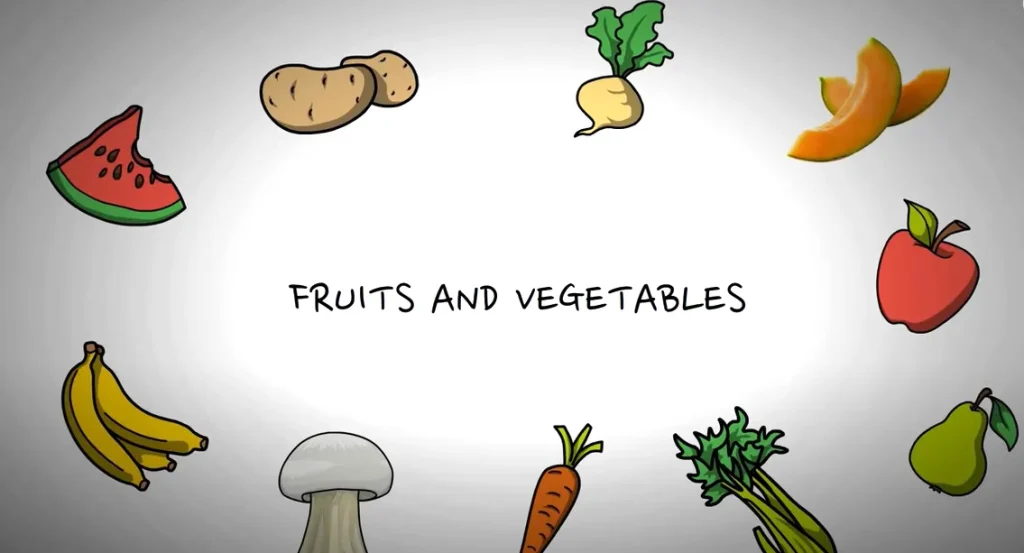
Processed fruit juices that are non-acidic, especially apple juice, cranberry juice, and orange juice, are full of ascorbic acid and citric acid and should be the first thing to go if you are suffering from reflux symptoms.
Fresh fruits and vegetables can also be surprisingly acidic.
Even small quantities can irritate the lining of your throat and stomach, raising the pH value of your stomach acid and leading to discomfort.
That is why you might feel pain after eating a grapefruit (pH 2.9) or a bowl of berries, such as blueberries (pH 4.3).
However, cutting out all the fresh fruits and vegetables from your diet isn’t the best option.
While it’s pretty easy to figure out what products don’t work for you, sometimes it’s more challenging to understand what you can consume.
We’ve created this list of non acidic fruits and our list of non-acidic vegetables, both full of better options for delicate tummies.
List of non acidic fruits and vegetables
Here is your list of non citrus fruits and vegetables that are best for your diet.
List of non-acidic fruits
While it is hard for any fruit to have 0% acidity, this is a non acidic fruits list with a cornucopia of fruits with low acid values.
Whether you are looking for least acidic fruits for gastritis, heartburn, or any other reason, these fruits without acid should be at the top of your shopping list.
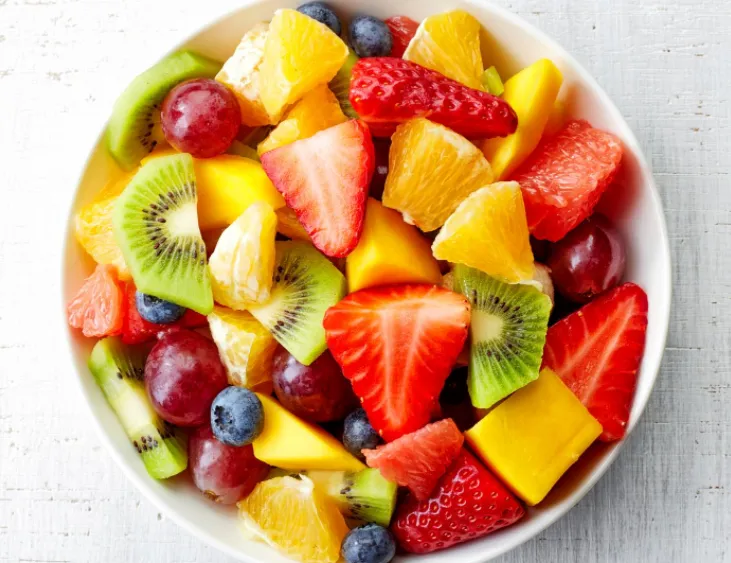
Remember, some fruits that are not acidic, like bananas, change their acidity levels as they ripen, and you should consider this.
Try removing their skins before eating if you still have trouble digesting certain low or non acidic fruits, especially those with higher levels like kiwi or peaches.
| Fruit | pH Range |
|---|---|
| Avocados | 6.27–6.58 |
| Persimmon, Fuyu | 6.25 |
| Cantaloupe | 6.13–6.58 |
| Olives Black | 6.00–7.00 |
| Honeydew Melon | 6.00–6.67 |
| Mangoes Ripe | 5.80–6.00 |
| Dates | 5.49 |
| Honeydew | 5.42 |
| Papaya | 5.20–6.00 |
| Watermelon | 5.18–5.60 |
| Bosc pear | 5.15 |
| Figs, Calamyrna | 5.05–5.98 |
| Pumpkin | 4.99–5.50 |
| Bananas | 4.50–5.20 |
| Kiwi | 4.84 |
| Peach | 3.3–4.05 |
Non-acid vegetable list
Luckily for us, there is a wide range of non acidic foods and vegetables ready to fill up your plate.
As a general rule, the best veggies to look out for are the infamous dark, green, leafy sort, like kale and spinach, synonymous with healthy living.
Let’s check out some other options:
| Vegetable | pH Range |
|---|---|
| Broccoli | 6.30–6.75 |
| Asparagus | 6.00–6.70 |
| Mushrooms | 6.00–6.70 |
| Soybeans | 6.00–6.60 |
| Brussels Sprouts | 6.00–6.30 |
| Corn | 5.90–7.50 |
| Carrots | 5.88–6.40 |
| Radishes | 5.85–6.05 |
| Celery | 5.70–6.00 |
| Hearts of Palm | 5.70 |
| String Beans | 5.60 |
| Cauliflower | 5.60 |
| Spinach | 5.50–6.70 |
| Eggplant | 5.50–6.0 |
| Cooked Okra | 5.50–6.60 |
| Potatoes | 5.40–5.90 |
| Parsnip | 5.30–5.70 |
| Cabbage | 5.20–6.70 |
| Acorn Squash | 5.18–6.49 |
| Cucumbers | 5.12-5.78 |
Is a low-acid diet right for you?
Are you thinking about making the change to a low-acid diet?
A low-acid diet, like the GERD diet or the acid reflux diet, can help those suffering from upsets such as acid reflux symptoms and heartburn.
These diets advocate cutting out highly acidic foods like citrus fruit and red meat and filling up your plate with alkaline foods or other low-acid foods.
In addition to low-acid fruits and vegetables, low-acid foods include certain foods like soy foods, whole grains, and pulses such as beans and lentils.
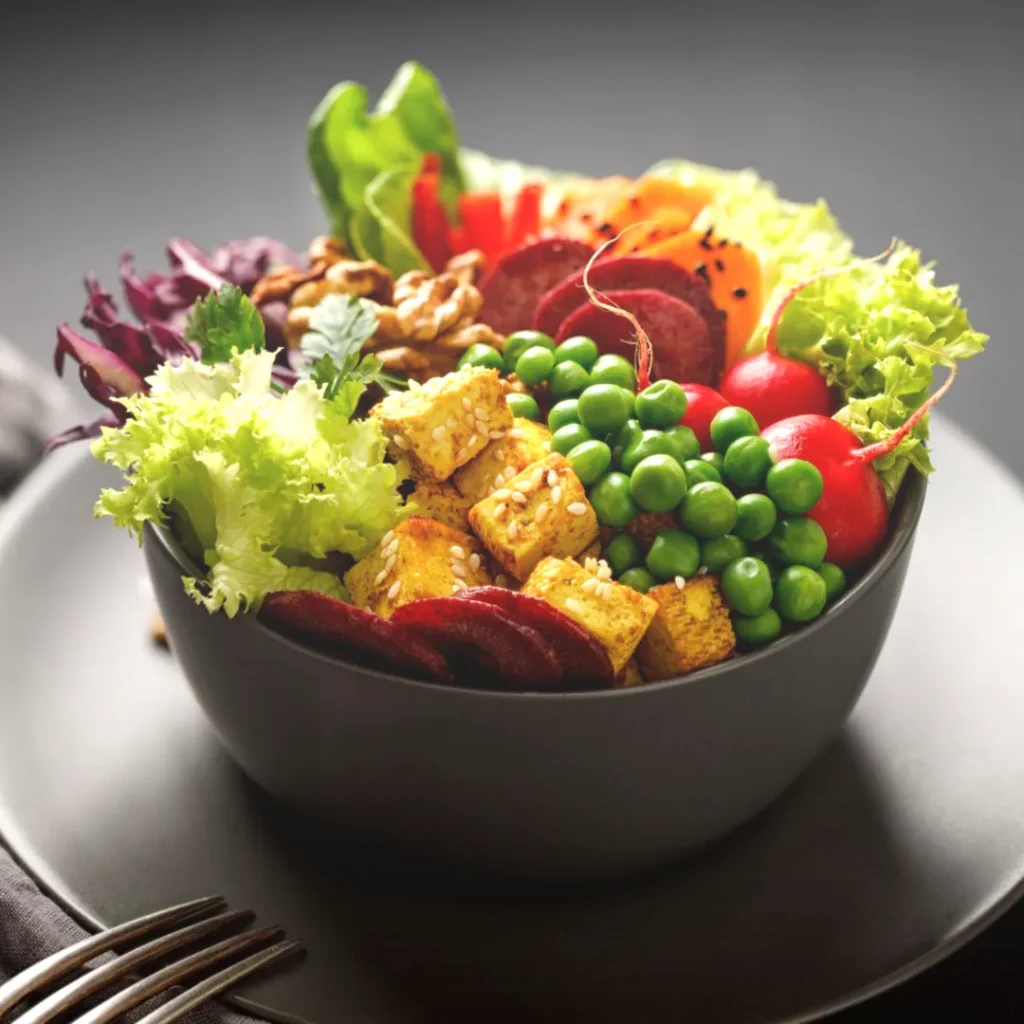
These so-called ‘alkaline food’ types reduce acid production and help ease digestional discomfort.
Combining these foods with non acid fruits and low acid vegetables is a go-to recipe for a calm stomach.
Additionally, alkaline foods are typically full of vitamins and minerals, further improving your overall health and sense of well-being.
Give a low-acid diet a try and see how your stomach feels.
What you need to care about while choosing low acidic fruits and Low acidic vegetables
Like always, we recommend consuming fresh, locally grown (wherever possible) fruit and vegetables that have been minimally processed.
Some companies use citric acid as a preservative on so-called ‘fresh produce,’ like bagged carrots or cut fruits.
Always check out the ingredients in the nutritional information to avoid any nasty surprises!
It’s also essential to wash your veggies before consuming them, as the skin can be full of preservatives and other dangerous pesticides or contaminants.
Final verdict
If you are suffering from symptoms of digestive discomfort, then it may be time to consider the pH value of the foods you consume.
Cut out the highly processed foods full of acid and fill your diet with these non-acidic vegetables and fruits.
Try it, even just for a week, and see what a difference a low-acid diet can make in your life.

Rosily Ryan is an accomplished health and fitness writer, editor, and health activist based in Sydney, Australia. With a wealth of knowledge and expertise in the health and nutrition industry, Rosily has established herself as a trusted authority in the field. She has contributed to several leading publications, including Pure Green Magazine, where her work has been widely recognized for its insightful analysis and engaging style.
Rosily’s passion for health and fitness is evident in her writing. Her extensive research and first-hand experience in the field allow her to provide valuable insights and practical advice to her readers. As an advocate for healthy living, Rosily has been actively involved in various health initiatives and campaigns that aim to raise awareness about the importance of physical and mental well-being.
